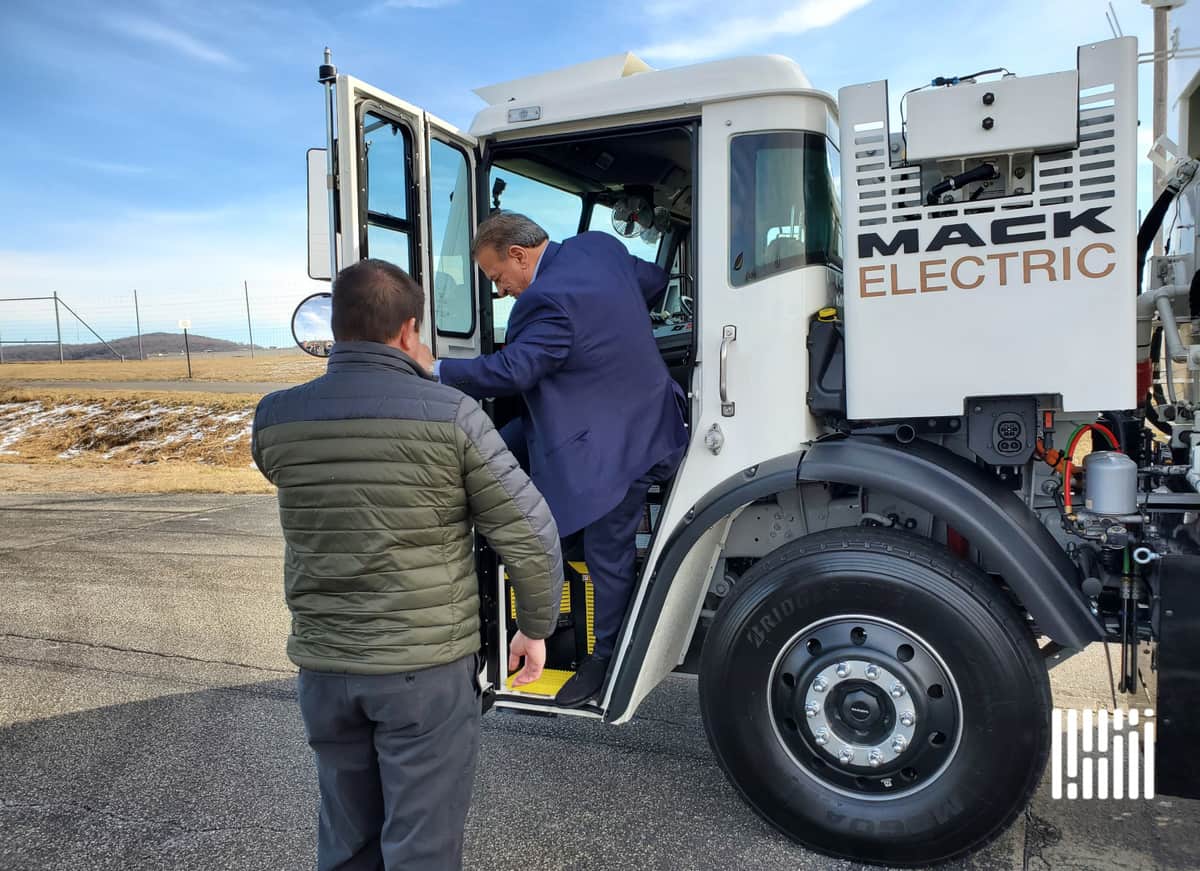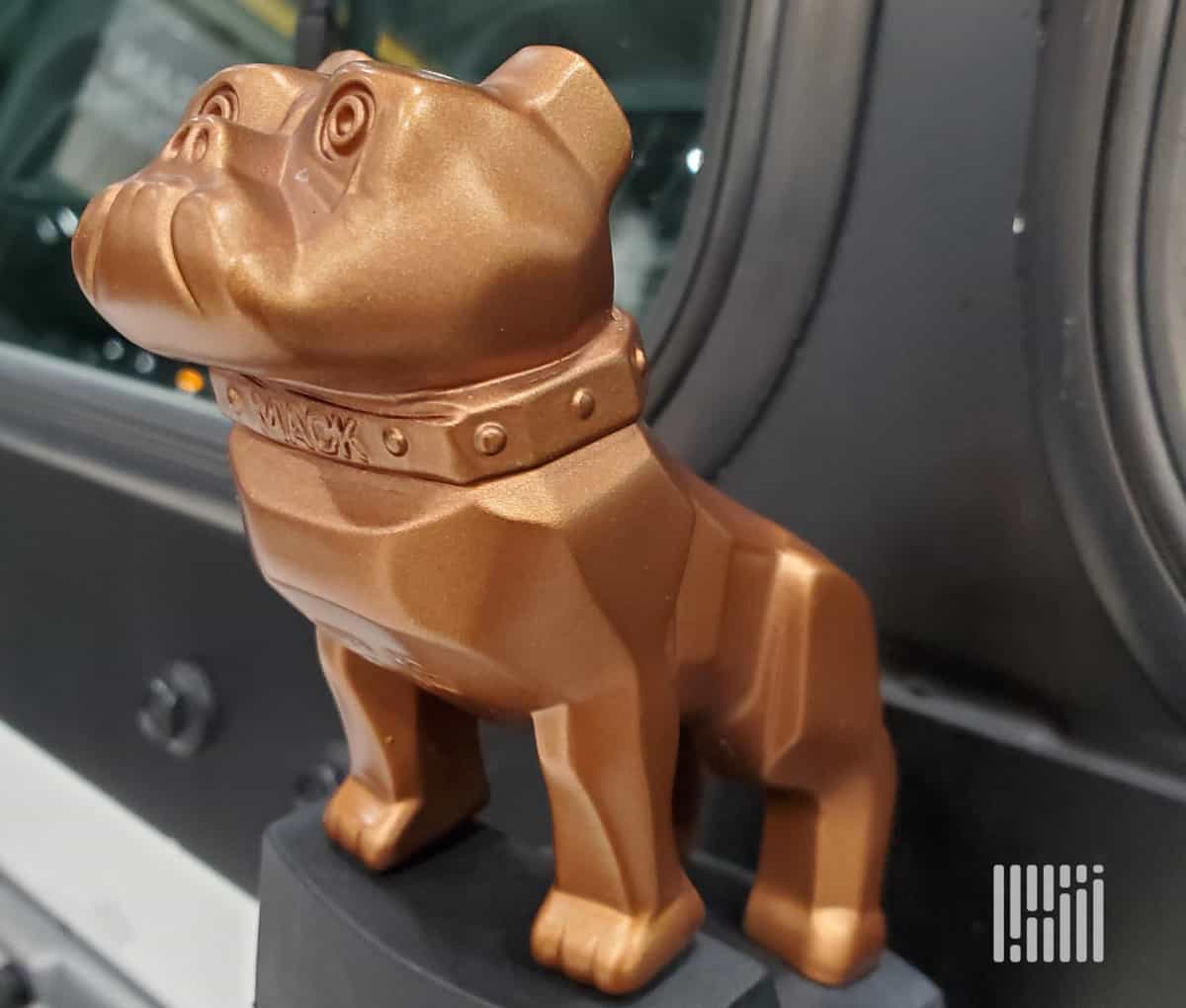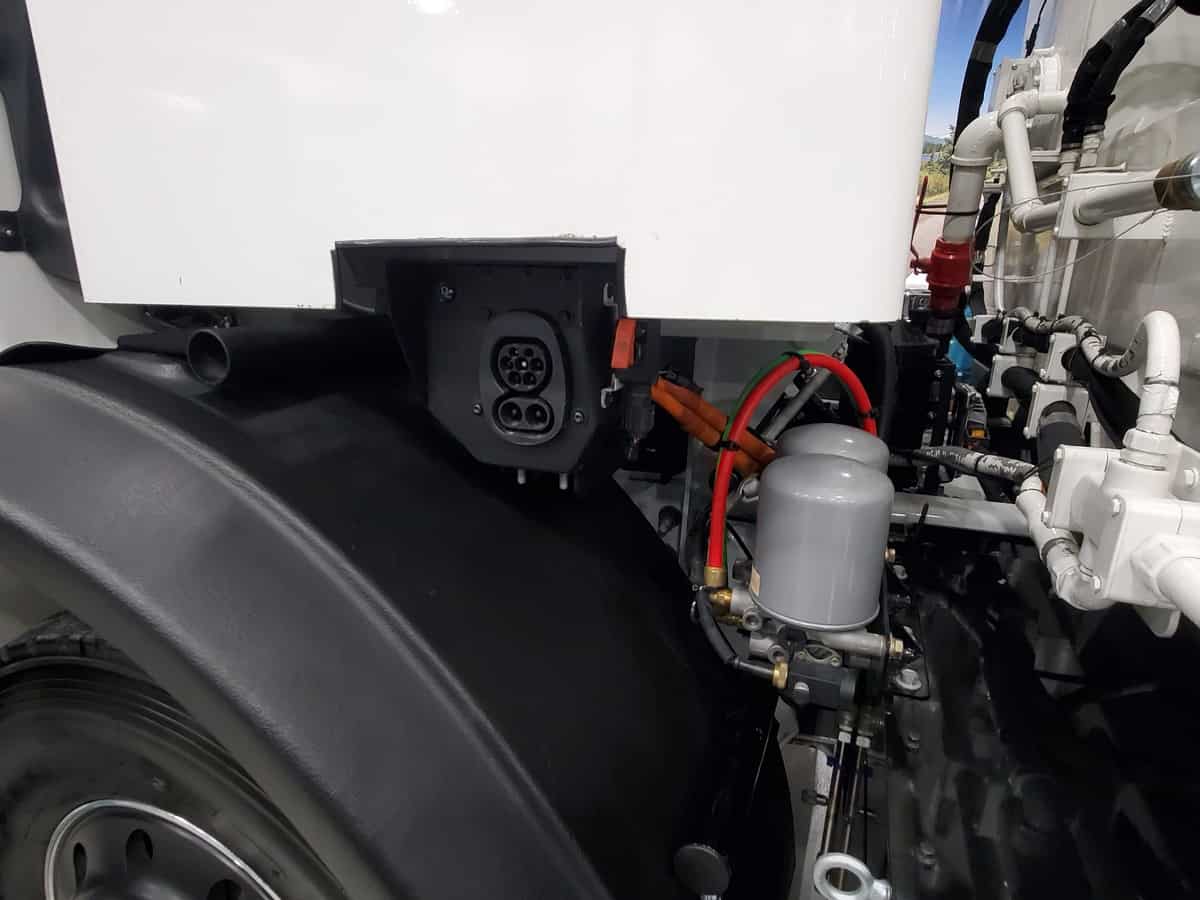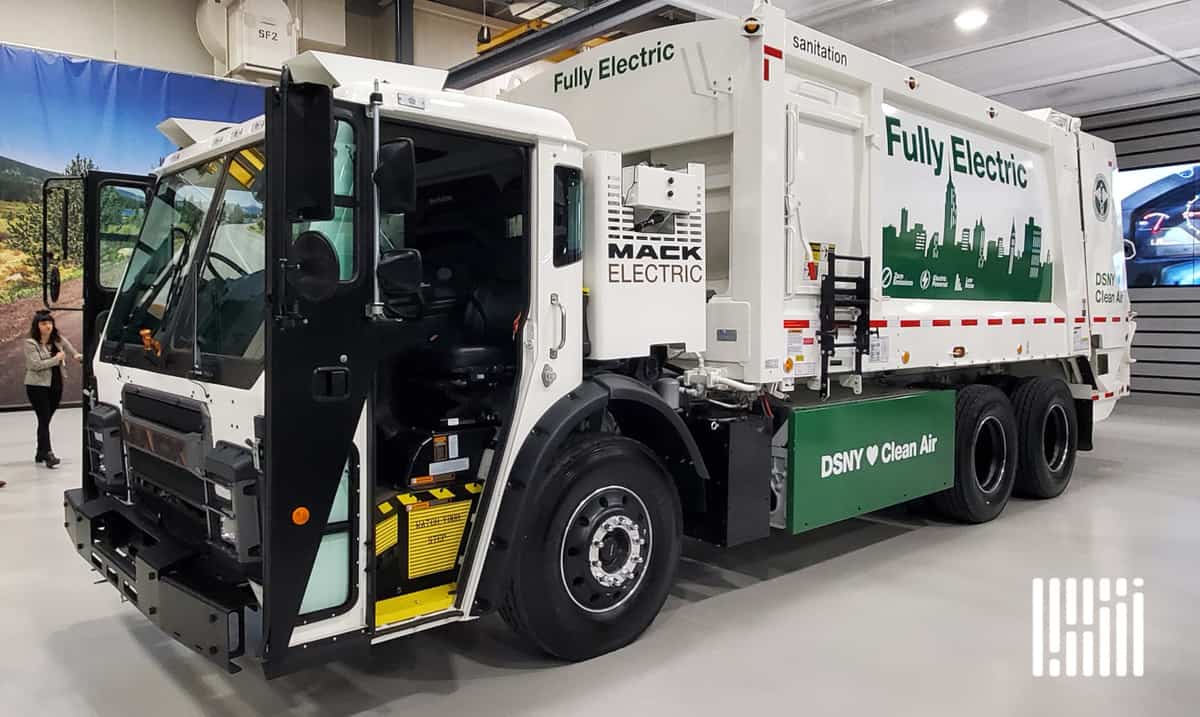While many of its competitors have been jumping into the electric vehicle fray, Mack Trucks has taken a slower approach. Company officials have repeatedly said the company would move into electric when the time was right, and it isn’t like Mack is falling behind. Thanks to the technological advancements of its parent company, the Volvo Group, Mack is able to benefit from those investments as it blazes its own path forward.
But, Mack’s electric time has come, and its entry may mark just the beginning of an electromobility future. When Mack formally introduced its LR Electric refuse model on Thursday, attendees from the media and the New York City Department of Sanitation (DSNY), which will test the truck in real-world operation beginning in the second quarter of this year, got a glimpse of what may ultimately become the first step in Mack’s electric journey.

Why was refuse the first application, though?
“It’s a closed loop application; it has predetermined routes; and it has range [limitability],” said Roy Horton, director of product strategy for Mack Trucks. “It’s home every night, so for a battery-electric vehicle that needs charging, it’s a perfect [application].”
The LR Electric features two AC motors with 496 peak horsepower producing 4,051 pounds-foot of torque with a two-speed transmission. It is equipped with a 20,000-pound Mack FXL20 front axle and two Mack S522R 52,000-pound rear axles. Gross vehicle weight is 72,000 pounds.
Powering the vehicle are four lithium nickel manganese cobalt oxide batteries and a charging system that features up to 150 kW charging power at 200 amps maximum current.

A regenerative braking system that features auto, low and high options gives operators the ability to manage how much energy is captured during braking.
All accessories are electrically driven, including the 25-yard DuraPack 5000 rear loader.
Horton noted that it produces zero emissions and little noise, and will lead to reduced operating costs from fewer components, less wear and tear on brakes, and the use of less oil and lubricants to keep mechanical engines operating.
While no future product plans were mentioned, Horton told FreightWaves the LR Electric “will help establish electromobility for Mack Trucks.”

“This is a good start and I believe this is the right application for it,” said Jonathan Randall, senior vice president of North American sales and marketing for Mack Trucks. “Our position is, there is viability for electric in the industry and it makes sense in inner city, in urban delivery. Others are looking at over the road, and if that is viable, we can [adapt the system to that]. If it can haul 80,000 pounds of trash, it can move 80,000 pounds of goods down the highway.”
The electric system borrows from the Volvo Group’s work on electric buses in Europe, but it is not a “plug-and-play” system, Horton said.

“There’s still a lot of research and development work to make this suitable for [U.S. applications],” he said. “Whatever comes next, that’s another R&D effort.”
Pairing with New York City on the trial, though, is crucial. The city, Rocky DiRico, deputy commissioner of DSNY, explained, features as many different conditions in one place as possible — everything from tight, congested city streets to temperature extremes that will occur during the test period, giving Mack a true barometer to measure the vehicle’s performance.
“If it works with DSNY, it will work with others,” Horton said.

Randall said there has been a lot of interest from refuse fleets looking to test the LR Electric. A second vehicle will go into testing later this year in North Carolina with Republic Services.







